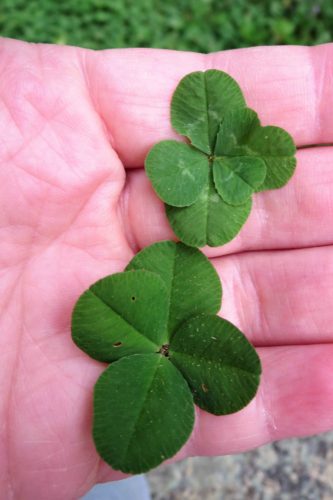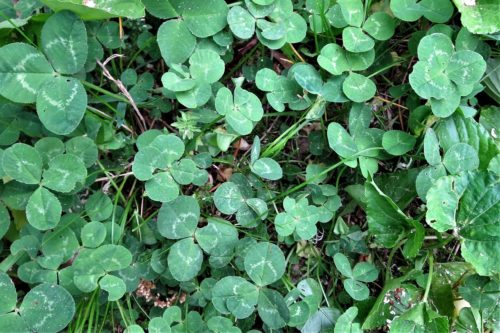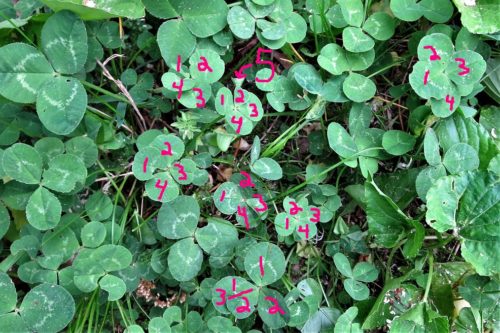Four-leaf clovers aren’t rare. Neither are five-leaf clovers. I find them all the time.

Though they’re not rare, four-leaf clovers are something that you have to train yourself to see. First, you have to look at the ground. It is often said that people don’t look up, but neither do they look down. The ground, like the sky, is virtually invisible, something that people tend to tune out, but it is full of wonders for those who care to look.
Simply looking down isn’t enough, though. You also need to train you brain to isolate the shape. Once you do, you may be able to find four-leaf clovers in any stretch of green that has clovers growing in it. At the time I took the picture below, I had already picked six mutant clovers from that patch, but there were still plenty left.

Some of the mutants may be hard to spot due to the way the leaves are facing and the poor lighting, but there are a few obvious ones.
Here is what I see in that patch of clover.

There are at least five 4-leaf clovers, plus an unusual 5-leafer and a 3-leafer on which one leaf is almost split into two.
No, four-leaf clovers are not rare, but I still can’t help believing that they’re lucky. That means that I am a very lucky person and always have been. As a child, I used to find four-leaf clovers in my parents’ yard, too, as well as clovers with even more leaves. I once found a 12-leafer. It must have been three times as lucky as a four-leaf clover, and how lucky I was to find it!
Here is the best thing: if four-leaf clovers are both common and lucky, and if they’re something that people can train themselves to find, then anyone can be lucky. All they need to do is learn to look for luck and recognize it when they see it. And if that isn’t a lovely metaphor, I don’t know what is.
